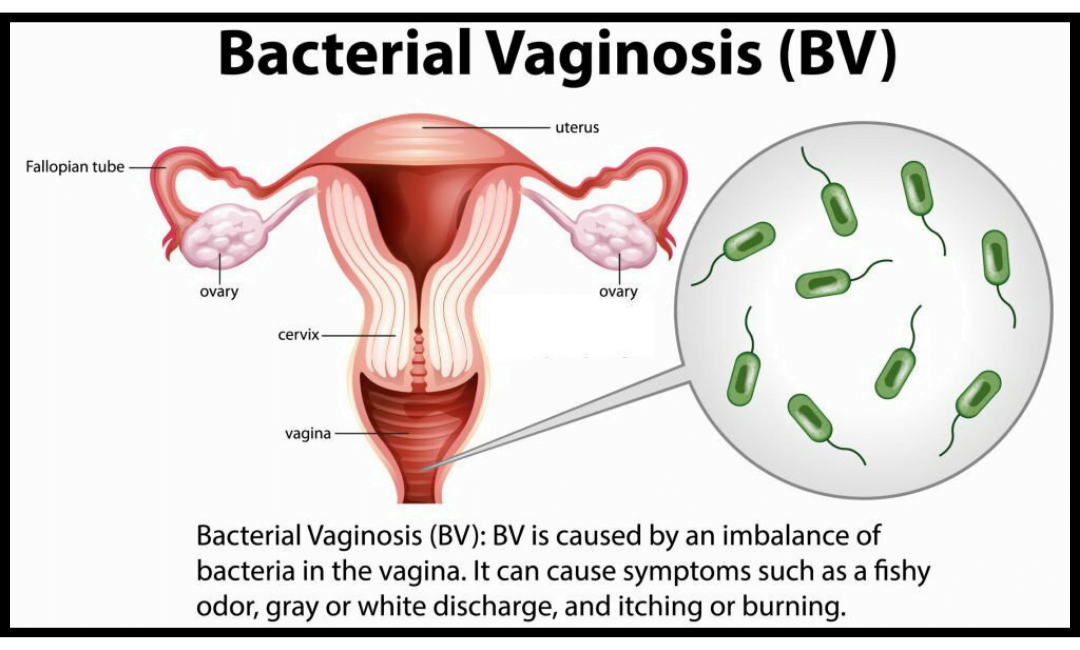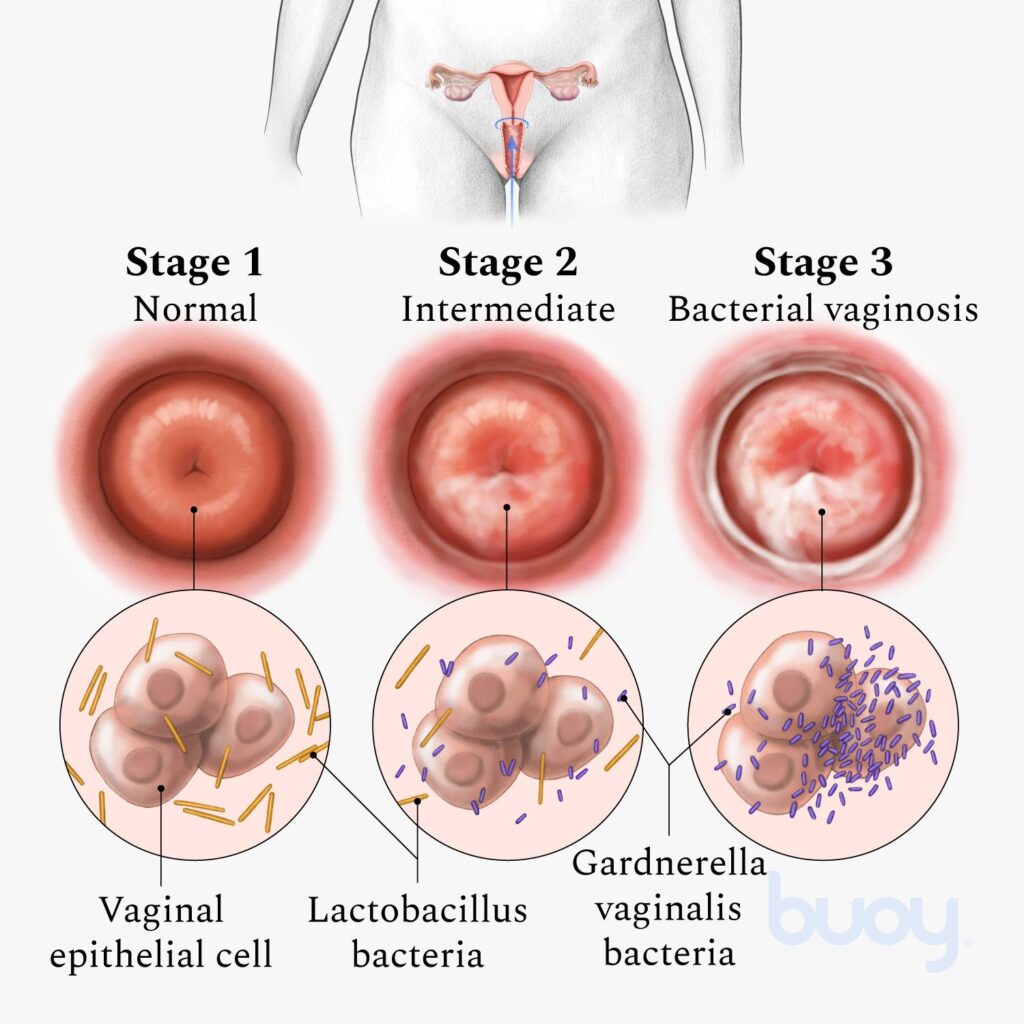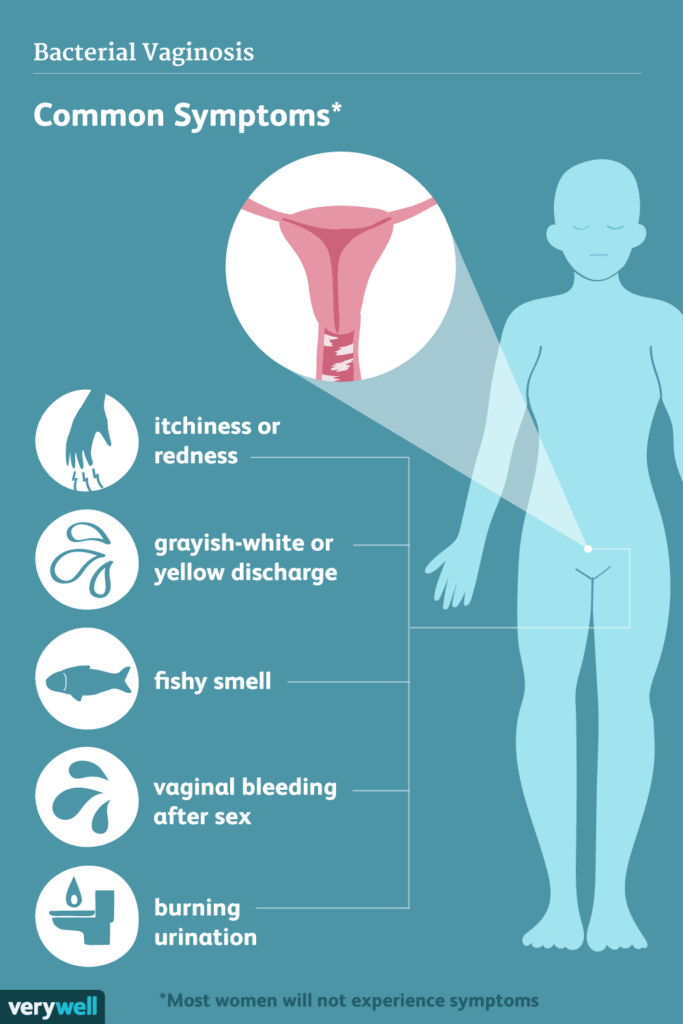Bacterial Vaginosis: Everything You Need to Know in Malaysia
Table of Contents

Bacterial Vaginosis (BV) in Malaysia arises from an imbalance in vaginal bacteria. You might notice symptoms like thin, grayish-white discharge with a fishy odor, vaginal irritation, or discomfort during urination and sex. Factors such as sexual activity, douching, and antibiotics can trigger BV. To diagnose BV, doctors use physical exams and lab tests. Treatment includes antibiotics and probiotics to restore balance, while lifestyle changes like avoiding douching and practicing safe sex help prevent recurrence. Limited healthcare access and cultural beliefs might impact awareness and treatment. To learn about prevention strategies and local clinics, continue exploring.
Understanding Bacterial Vaginosis
Why is understanding bacterial vaginosis crucial for maintaining vaginal health? Knowing the causes and prevention strategies can significantly reduce your risk of developing this common infection. Bacterial vaginosis (BV) stems from an imbalance in the natural bacteria in your vagina. While not classified as a sexually transmitted infection, factors like sexual activity, douching, antibiotic use, and hormonal changes can trigger it.
Familiarizing yourself with treatment innovations and lifestyle adjustments is essential. For example, recent advances in probiotics and targeted antibiotics offer more effective ways to restore the bacterial balance. Some studies have shown that certain probiotics can help maintain a healthy vaginal flora, reducing the recurrence of BV. Additionally, new topical treatments and oral medications provide alternatives for those who may not respond well to traditional therapies.
Lifestyle adjustments also play a crucial role in managing and preventing BV. Avoiding douching, using mild, unscented soaps, and wearing breathable, cotton underwear can help maintain the natural pH of your vagina. Limiting the use of antibiotics to when they’re absolutely necessary can also prevent disruptions in your vaginal flora.

Symptoms of Bacterial Vaginosis
Recognizing the symptoms of bacterial vaginosis is crucial for timely and effective treatment. You might notice a thin, grayish-white vaginal discharge, which is often one of the first signs. This discharge is usually accompanied by a strong fishy odor, especially noticeable after sex. Such symptoms often occur due to an imbalance in vaginal pH levels and bacterial imbalance.
Irritation, burning, or itching around the vaginal area can also indicate bacterial vaginosis. These symptoms might be more pronounced during your menstrual cycle, as hormonal changes can exacerbate the condition. Painful urination or discomfort during sex are additional signs that shouldn’t be ignored.
You may also experience redness or irritation in the vaginal area. These symptoms reflect the body’s response to the bacterial imbalance and disrupted vaginal pH levels.
Monitoring these symptoms and seeking medical advice promptly can help you manage the condition effectively.

Causes of Bacterial Vaginosis
Understanding the causes of bacterial vaginosis is essential for effective prevention and management. Bacterial vaginosis (BV) primarily stems from a microbiome imbalance in your vagina. Normally, Lactobacillus species dominate the vaginal flora, producing lactic acid to maintain an acidic environment that prevents harmful bacteria from thriving. When there’s a decrease in Lactobacillus and an overgrowth of other bacteria, BV can develop.
Several factors can disrupt this delicate balance. Engaging in sexual activity, especially with new or multiple partners, might alter the vaginal microbiome. Douching is another significant contributor, as it can wash away beneficial bacteria, leading to an imbalance. Antibiotic use for treating unrelated infections can also inadvertently kill off Lactobacillus, making room for pathogenic bacteria to proliferate.
Hormonal changes, such as those occurring during menstruation, pregnancy, or menopause, can also influence the vaginal environment and contribute to BV. Understanding these causes helps in formulating prevention strategies, such as avoiding douching and practicing safe sex.
Treatment approaches typically involve antibiotics to restore the bacterial balance. However, focusing on maintaining a healthy vaginal microbiome through lifestyle choices and possibly probiotics may offer long-term benefits in preventing recurrent BV episodes.

Risk Factors in Malaysia
In Malaysia, engaging in common risk behaviors such as frequent douching, having multiple sexual partners, and neglecting condom use can significantly increase your chances of developing bacterial vaginosis.
Additionally, disparities in healthcare access may hinder early diagnosis and treatment, exacerbating the issue.
It’s crucial to understand how these factors contribute to your risk to take preventive measures effectively.
Common Risk Behaviors
Why are behaviors like frequent douching and sexual activity with multiple partners common risk factors for bacterial vaginosis among women in Malaysia?
Frequent douching disrupts the natural balance of vaginal bacteria, which is essential for maintaining vaginal health. Cultural influences and misconceptions may lead many women to believe that douching is a necessary hygiene practice. However, it’s crucial to understand that this practice can increase your risk of bacterial vaginosis. Prevention strategies, such as avoiding douching and opting for gentle, unscented products, can help maintain a healthy vaginal environment.
Sexual activity with multiple or new partners can also elevate your risk. This is because different bacteria from new partners can disrupt the vaginal flora. Implementing behavioral changes, such as using condoms and maintaining a monogamous relationship, are effective prevention strategies.
Additionally, poor hygiene practices, including the use of harsh soaps or scented products, can be harmful. These practices often stem from cultural influences and misconceptions about cleanliness. To prevent bacterial vaginosis, focus on using mild, fragrance-free products and maintaining good overall hygiene.
Healthcare Access Disparities
Healthcare access disparities in Malaysia significantly heighten the risk factors for bacterial vaginosis by limiting women’s access to quality healthcare services. When healthcare disparities exist, women in underserved regions struggle to obtain timely and effective treatment, increasing their vulnerability to bacterial vaginosis.
Socioeconomic impact plays a crucial role here; those with lower income levels and limited education often have less access to medical care and health information, exacerbating the problem.
Awareness about bacterial vaginosis is another critical issue. Due to cultural beliefs and practices surrounding women’s health, there may be a lack of open discussions, leading to inadequate knowledge and misconceptions. Comprehensive sexual and reproductive health education is often insufficient, leaving many women unaware of how to prevent or treat bacterial vaginosis effectively.
Addressing these disparities requires multifaceted solutions. Improving healthcare infrastructure in underserved regions can provide more equitable access to quality care. Additionally, enhancing education on sexual and reproductive health can empower women with the knowledge they need to manage their health proactively.
Diagnosis Methods
When diagnosing bacterial vaginosis, your healthcare provider may use physical examination techniques like vaginal pH testing and the Whiff test to identify key symptoms. Laboratory testing procedures, including microscopic examination of vaginal discharge and DNA testing, help confirm the presence of clue cells and specific bacterial species.
These methods, guided by the Amsel criteria, ensure an accurate and comprehensive diagnosis.

Physical Examination Techniques
To diagnose bacterial vaginosis, a thorough physical examination is essential, including inspecting the vaginal walls and cervix for signs like redness, swelling, or abnormal discharge. During a speculum exam, your healthcare provider will perform a visual inspection of the vaginal walls and cervix. They’re looking for any indications of bacterial vaginosis, such as thin, gray or white discharge, which is a common symptom.
Additionally, pH testing of vaginal secretions is a crucial part of the examination. Normally, the vaginal pH is between 3.8 and 4.5. If it’s elevated above 4.5, it can indicate bacterial vaginosis. This test is quick and provides immediate results.
Microscopic analysis of the vaginal discharge is another key diagnostic step. Your provider will take a sample of the discharge and examine it under a microscope, looking for clue cells. These are vaginal epithelial cells covered with bacteria and are a hallmark of bacterial vaginosis.
Laboratory Testing Procedures
In diagnosing bacterial vaginosis, laboratory testing procedures, such as pH testing and microscopic examination, play a pivotal role in confirming the condition. When you visit a healthcare provider, one of the first steps involves pH testing of vaginal secretions. A pH level above 4.5 often indicates bacterial vaginosis.
Additionally, microscopic examination of vaginal discharge can reveal clue cells, which are epithelial cells covered with bacteria and are a hallmark of the condition.
Another diagnostic method is the whiff test. Your healthcare provider will add a drop of potassium hydroxide to the vaginal discharge sample. If a fishy odor is released, it strongly suggests bacterial vaginosis.
The Amsel criteria, a set of clinical guidelines, further aids in diagnosis. These criteria include the presence of a thin, grayish-white vaginal discharge, a vaginal pH level above 4.5, a positive whiff test, and the identification of clue cells under a microscope. Meeting at least three of these four criteria confirms the diagnosis.
For more precise identification, DNA testing can be employed to pinpoint specific bacterial species within the vaginal microbiome. This comprehensive approach ensures accurate diagnosis and effective treatment planning.
Treatment Options
Treating bacterial vaginosis primarily involves the use of antibiotics, available either as oral medication or vaginal gels. Commonly prescribed antibiotics include metronidazole and clindamycin. These treatments are highly effective, but it’s crucial to complete the full course even if symptoms improve before finishing the medication.
In addition to antibiotics, some patients explore herbal remedies and alternative therapies. While these options lack the robust clinical evidence supporting antibiotics, some women find relief using tea tree oil, garlic, or probiotics. It’s important to discuss any alternative treatments with your healthcare provider to ensure they don’t interfere with conventional medications.
Probiotics, particularly those containing Lactobacillus, may help restore the balance of good bacteria in your vagina. This can be beneficial in both treatment and prevention of bacterial vaginosis recurrence. Incorporating probiotics into your daily routine, either through dietary supplements or fermented foods, can be an effective adjunct to antibiotic therapy.
Managing hormonal imbalances and maintaining good hygiene practices are also essential components of treatment. Avoiding douching and using condoms during sex can help maintain the natural bacterial balance. Additionally, a healthy diet rich in nutrients supports your body’s ability to combat infections.


Prevention Tips
Adopting specific prevention strategies can significantly reduce your risk of developing bacterial vaginosis. Start by avoiding douching, which can disrupt your natural vaginal microbiome and increase your risk.
Practicing safe sex by using condoms can also help reduce transmission risks. Limiting your number of sexual partners is another effective prevention strategy, lowering your chances of developing bacterial vaginosis.
Incorporating natural remedies and lifestyle changes can further support vaginal health. Maintain good hygiene by wearing breathable underwear and avoiding scented feminine products, which can irritate and disturb the vaginal environment.
Regularly incorporating probiotics into your diet is another evidence-based strategy. Probiotics can promote a healthy balance of vaginal bacteria, potentially preventing bacterial vaginosis.
Dietary modifications can also play a role in prevention. Consuming foods rich in probiotics, such as yogurt and fermented foods, supports a healthy vaginal microbiome. Additionally, maintaining a balanced diet rich in fruits, vegetables, and whole grains can enhance your overall immune system, making it easier for your body to fend off infections.

When to See a Doctor
Recognize the importance of seeing a doctor promptly if you notice unusual vaginal discharge, odor, or itching. These symptoms could indicate bacterial vaginosis (BV), which requires timely medical attention to prevent complications such as pelvic inflammatory disease or increased susceptibility to sexually transmitted infections. Persistent symptoms should prompt you to seek a healthcare provider for an accurate diagnosis and effective treatment.
Telemedicine options are now widely available, making it easier to consult with a doctor from the comfort of your home. This is particularly beneficial if you’re unable to visit a clinic in person. Online consultations can help in discussing your symptoms, obtaining prescriptions, and receiving professional advice on managing BV.
Support groups can offer additional help, providing emotional backing and shared experiences from others dealing with similar issues. These groups can be found online or through local health organizations, offering a sense of community and practical advice.
Regular check-ups are crucial for monitoring any recurring concerns related to bacterial vaginosis. Timely consultation helps determine the underlying cause of symptoms and ensures appropriate treatment, promoting better overall vaginal health. Don’t hesitate to reach out to medical professionals if you suspect BV.

Women's Health Clinics in Malaysia
Women’s health clinics in Malaysia provide specialized care tailored to address the unique healthcare needs of women, ensuring you receive expert medical attention in a supportive and comfortable setting. These clinics offer comprehensive services, including gynecological exams, family planning, and menopause management, all crucial for maintaining your overall health. Skilled professionals are dedicated to delivering personalized care, making you feel comfortable and understood.
Regular check-ups at these clinics are essential for the early detection and management of health issues, helping you maintain optimal health. Located conveniently in Kuala Lumpur, these clinics ensure that accessing quality healthcare is hassle-free. Moreover, many clinics now offer telemedicine options, enabling you to consult with healthcare providers from the comfort of your home, which is particularly beneficial during times when in-person visits might be challenging.
Community outreach programs are also a vital aspect of these clinics, aiming to educate women about their health and the importance of regular check-ups. By participating in these initiatives, you can stay informed and proactive about your health. Trust in the expertise of Malaysia’s women’s health clinics to provide the care you need.
Conclusion
In conclusion, recognizing symptoms of bacterial vaginosis (BV) in Malaysia is crucial for timely medical evaluation and appropriate treatment. Consulting a healthcare professional for diagnosis and considering treatment options, such as antibiotics, can effectively manage this condition.
Proper management, including adhering to prescribed medications and following hygiene recommendations, is essential for preventing recurrence and maintaining vaginal health. By seeking timely intervention and following medical advice, individuals can effectively manage bacterial vaginosis and improve their quality of life.
Find a women’s health clinic in Malaysia with kliniknearme.com.my

FAQ
Frequently Asked Questions
Your boyfriend isn’t directly giving you BV. Bacterial vaginosis stems from a bacterial imbalance in your vagina, not from him. However, hygiene practices play a crucial role.
Avoid douching and ensure both of you maintain good hygiene. Sexual activity can impact BV, but it’s not the sole cause.
Consult a healthcare provider for proper treatment and manage BV to prevent recurrence. Open communication about sexual health is essential.
